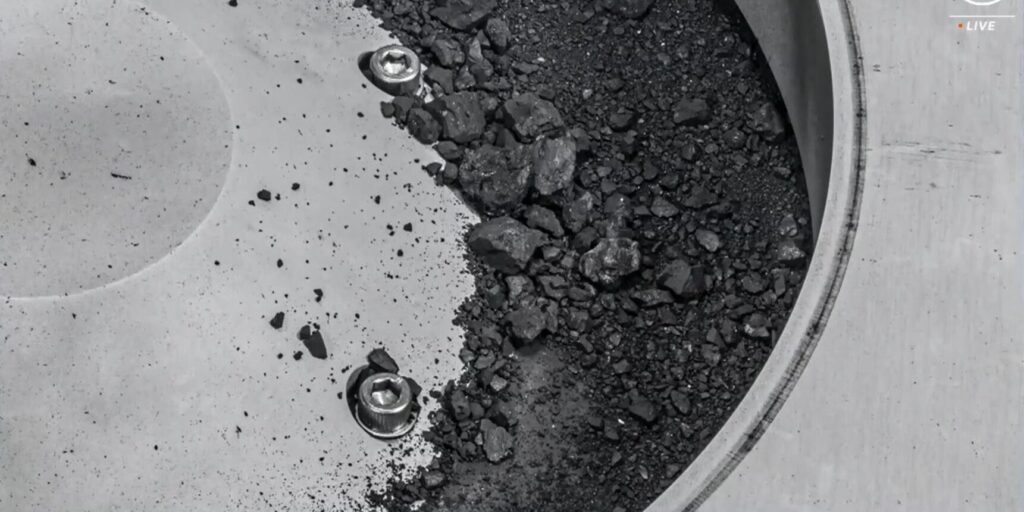In a historic moment, NASA recently showcased soil samples collected from the asteroid Bennu by the OSIRIS-REx interplanetary spacecraft, which returned to Earth last month. This mission aimed to retrieve a small quantity of material from Bennu’s surface. However, the process encountered unexpected difficulties due to the abundant amount of material collected – approximately 400 grams, exceeding the planned range of 60 to 250 grams.
The preliminary analysis of these samples has already provided intriguing insights into the composition of this near-Earth asteroid. Researchers discovered a significant presence of carbon and evidence of water within the clay minerals that constitute the asteroid’s makeup. This revelation further advances our understanding of celestial bodies and provides crucial data for planetary science.

Asteroid Bennu is an intriguing and potentially hazardous near-Earth object, boasting a diameter of approximately 500 meters. Due to its substantial size and proximity to Earth, it has earned the moniker of a “doomsday asteroid.” The OSIRIS-REx mission, which commenced its study of Bennu in 2018, was launched to collect samples from this celestial body.
In 2021, the interplanetary probe embarked on its journey back to Earth, eventually delivering the capsule containing the precious asteroid material on September 24, 2023. Remarkably, upon inspecting the capsule’s exterior, NASA scientists discovered an assortment of dark, dusty elements, offering a tantalizing glimpse into the nature of Bennu’s composition.
However, the OSIRIS-REx mission is far from concluded. It has now embarked on a new voyage towards the asteroid Apophis, further expanding our knowledge of space objects and the dynamics of our solar system.

Scientists believe that studying Bennu’s soil samples can enhance our comprehension of potentially hazardous asteroids and further illuminate the formation of our solar system. By delving into the mysteries concealed within the soil samples of Bennu, we can gain valuable insights into our cosmic neighborhood and potentially pave the way for future space exploration and planetary defense strategies. NASA’s ongoing efforts in space exploration continue to enrich our understanding of the universe, uncovering the secrets held by distant celestial bodies like Bennu.

